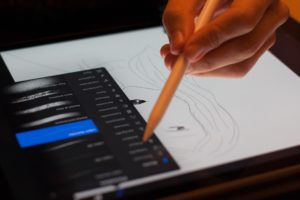Throughout my education, I have many experiences with multimedia learning and traditional learning. One of the main ones that I can remember was in my grade 10 History class. We were reading from a traditional textbook, taking notes, writing papers, and taking traditional multiple-choice tests. A couple of different multimedia learning opportunities were used and encouraged as well.
One instance of this was YouTube videos such as the “Crash Course” channel.
My teacher was able to pick specific videos that would give a condensed summary of a topic that we were learning. He would introduce these after we had read the chapter and he had lectured about the material. This allowed for the material to be shown in many forms and to be understood from multiple different mediums.
The “Crash Course” videos are a great example of multimedia learning. They include a person narrating throughout the video, drawings, and animation. There are two pictorial representations, drawings, and animation, which increase the visual stimuli.  Additionally, it most prominently uses narration rather than a written form of communication, supporting the “modality principle” that specifies that visuals combined with narration rather than written text increase learning (Mayer, 2014). The narrator also is featured in the video where he can be seen using “human-like gestures and movements”, has (at least for Canada and the United States) a non-forgiven accent and is speaking in a more conversation like narrative, all supporting the “Personalization, voice, embodiment, and image principles” (Mayer, 2014). These videos use technology in an engaging way that increases student comprehension of the material. For visual learners, this quick summary video can help to solidify material that was unclear in the readings.
Additionally, it most prominently uses narration rather than a written form of communication, supporting the “modality principle” that specifies that visuals combined with narration rather than written text increase learning (Mayer, 2014). The narrator also is featured in the video where he can be seen using “human-like gestures and movements”, has (at least for Canada and the United States) a non-forgiven accent and is speaking in a more conversation like narrative, all supporting the “Personalization, voice, embodiment, and image principles” (Mayer, 2014). These videos use technology in an engaging way that increases student comprehension of the material. For visual learners, this quick summary video can help to solidify material that was unclear in the readings.
I enjoyed this use of multimedia learning as it was a step away from the traditional PowerPoint that is often overused as a way of implementing multimedia learning in the classroom. It was a supplemental resource that could be watched again at home and was engaging. The history was conveyed in a story-like narrative that according to AJ Juliani increased comprehension as all parts of cognition are being used (Juliani, 2016).
Upon further research I found that they now have Crash Course Kids. This takes the same format but includes content for a younger audience. This is a great resource for elementary age students.
Another example was a presentation style that I was asked to use in my grade 10 English class. Instead of a PowerPoint with lots of text, few pictures, and myself narrating over it, I was asked to instead use only visuals on the PowerPoint and narrate based on these picture prompts. This forced the listeners to focus in on what the presenter was saying as there was no text to distract or fall back on. It also utilized both visuals and narration rather than visuals and text which, again, the “modality principle” stresses (Chapter 1, p.8). It was an interesting step away from how presentations are traditionally given and made for a memorable experience.
Juliani, A. J. (2016, March 21). The Hidden Importance of Teaching With Stories. Retrieved June 5, 2020, from http://ajjuliani.com/hidden-importance-teaching-stories/
Mayer, R. (2014). Introduction to Multimedia Learning. In R. Mayer (Ed.), The Cambridge Handbook of Multimedia Learning (Cambridge Handbooks in Psychology, pp. 1-24). Cambridge: Cambridge University Press. doi:10.1017/CBO9781139547369.002

Leave a Reply
You must be logged in to post a comment.